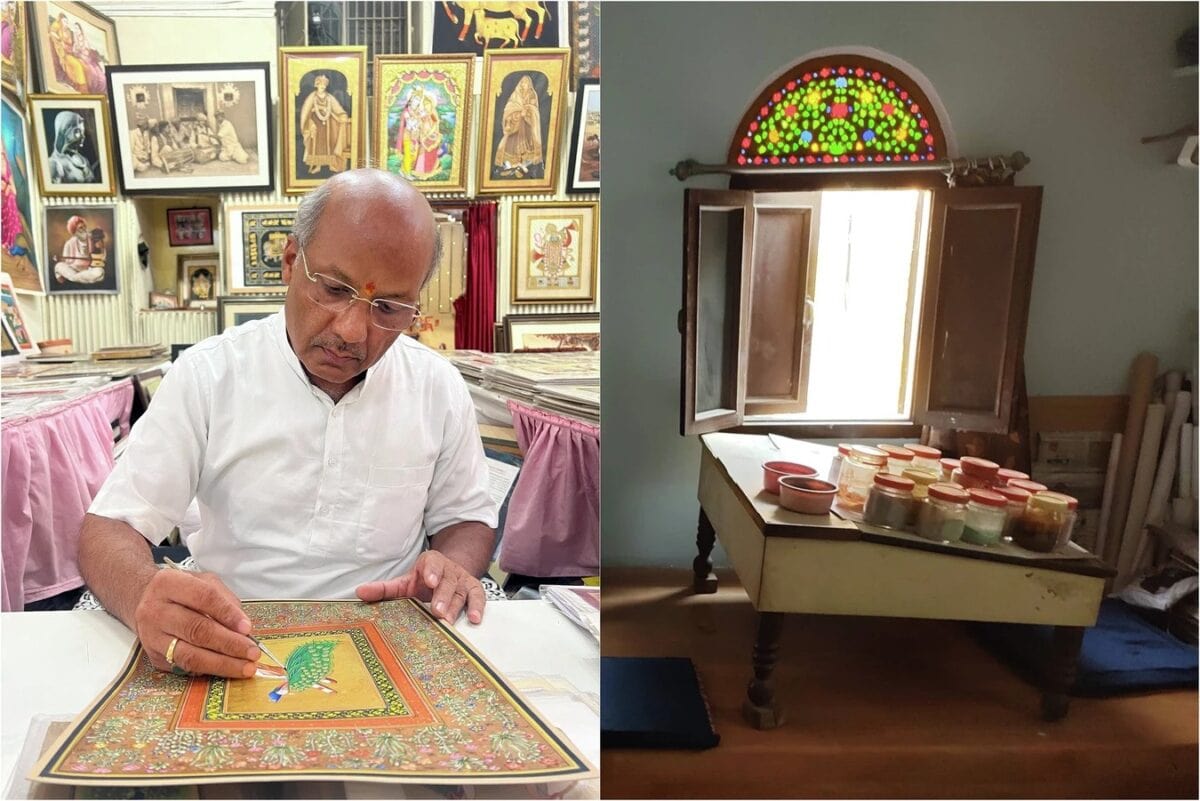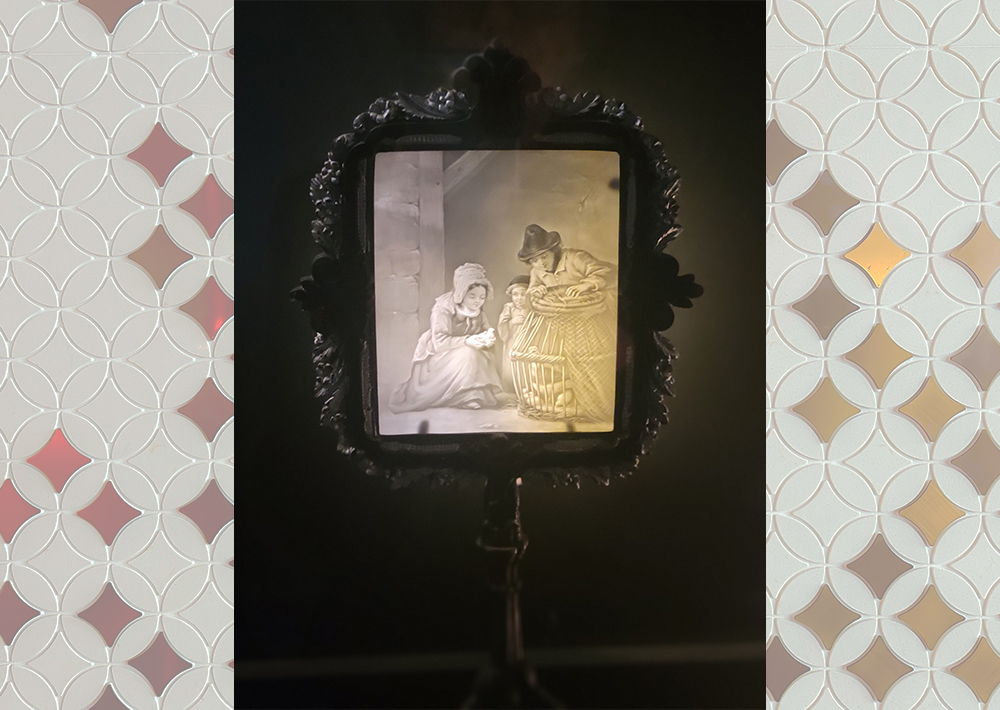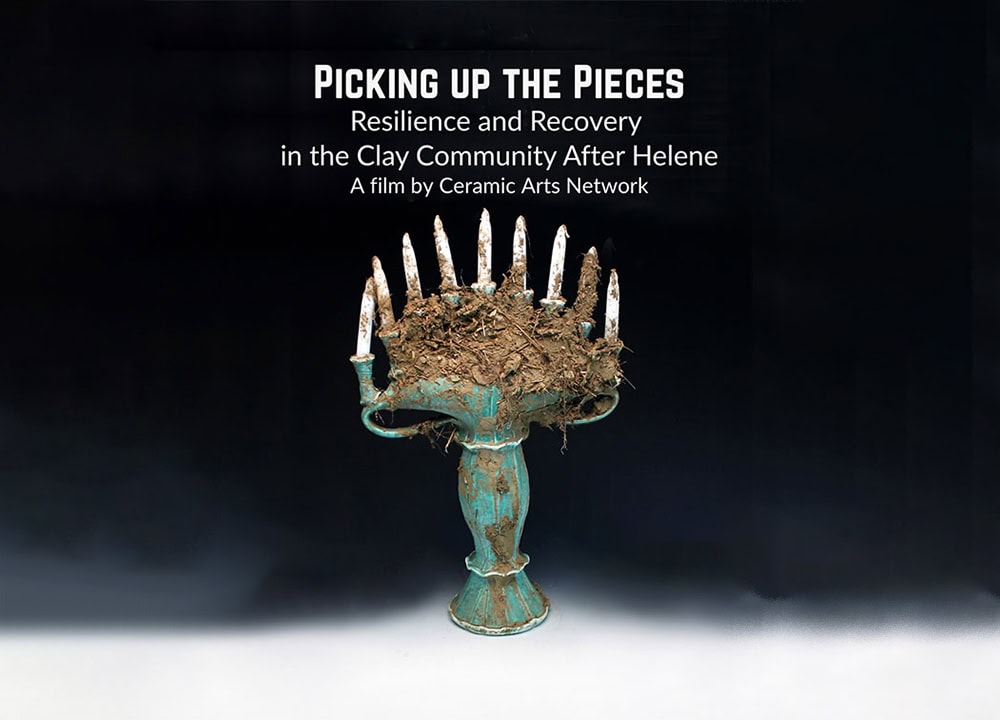
[Image above] Picture of Babulal Marotia, a traditional Indian miniature artist, in his workshop. Researchers from Harvard University characterized pigments from Marotia’s workshop to create a comprehensive dataset of traditional and contemporary Indian pigments. Credit: Chari et al., npj Heritage Science (CC BY-NC-ND 4.0)
“What’s your favorite color?”
This simple question, one of the most common icebreakers, may seem a bit childish on first take. But color is a fundamental element of our biological and cultural experiences of the world, and knowing the history of different pigments can give us deep insight into past societies.
Consider Egyptian blue, the world’s first synthetic pigment. This material revolutionized how statues, containers, and regalia were decorated in ancient Mediterranean societies. Another example is Böttger luster, a historical purple overglaze known for its distinctive iridescence. The development of this glassy material is a whole chapter in the story of European porcelain.
Each year, scientists make new discoveries involving the use and development of historic pigments. This CTT looks at three recent studies that make significant contributions to the color literature.
Oldest blue pigment ever discovered in Europe
Sometimes the greatest discoveries are hiding right under our noses. That was the case for a group of archaeologists from Denmark’s Aarhus University when they were reexamining a purported Paleolithic oil lamp housed at Mühlheim City Museum in Germany.
As explained in a Smithsonian magazine article, the archaeologists were originally examining the artifact for traces of animal fat to confirm its use as a lamp. But then they noticed small dots of blue pigment on the concave part of the bowl-shaped object.
The archeologists initially joked that modern ink may have gotten on the artifact while it was in storage, but further analysis revealed the spots are one of the oldest blue pigments in the world at around 13,000 years old. (The oldest title belongs to a blue pigment found on figurines in Siberia, dated between 19,000 and 23,000 years ago.)

The three areas of blue residue present on the sandstone layer of the stone artifact from Mühlheim City Museum. Scale bar is 50 mm. Credit: Wisher et al., Antiquity (CC BY 4.0)
X-ray fluorescence and microscopic imaging tests showed that the synthetic pigment was created from azurite, a mineral that is native to the area in Germany where the artifact was originally found in the 1970s. Additionally, because the blue spots were only found on the concave part of the artifact, the archaeologists hypothesis it may have been used as a palette or a mixing tool rather than a lamp.
“The presence of azurite shows that Paleolithic people had a deep knowledge of mineral pigments and could access a much broader color palette than we previously thought—and they may have been selective in the way they used certain colors,” says lead author Izzy Wisher, postdoc in the Department of Archeology and Heritage Studies at Aarhus University, in a press release.
The open-access paper, published in Antiquity, is “The earliest evidence of blue pigment use in Europe” (DOI: 10.15184/aqy.2025.10184).
Deep-sea worm creates toxic yellow pigment used by artists throughout history
Orpiment is a naturally occurring arsenic sulfide mineral used to create a vivid yellow pigment with a golden sheen. Despite its toxicity, artists throughout history made use of this material, including 17th-century Dutch painter Rembrandt and 19th-century French painter Paul Cézanne.
Historically, orpiment was mined in places such as Türkiye, Macedonia, Hungary, and Syria. It is generally considered to be formed as a sublimation product in volcanic fumaroles, low-temperature hydrothermal veins, and hot springs. It can also be formed as a byproduct when realgar, another arsenic mineral, decays.
In a surprising twist, researchers from the Center of Deep-Sea Research in the Chinese Academy of Sciences’ Institute of Oceanology discovered that orpiment can also be formed organically as part of the defensive mechanisms of the deep-sea worm Paralvinella hessleri.

Picture of the deep-sea worm Paralvinella hessleri, which accumulates microscopic particles of arsenic on its outer skin cells that react with sulfide to form a layer of the vivid yellow pigment orpiment. Credit: Wang et al., PLOS Biology (CC BY 4.0)
As explained in the open-access paper, P. hessleri lives in deep-sea hydrothermal vents in the western Pacific Ocean. To withstand the extreme environment, the worm accumulates microscopic particles of arsenic on its outer skin cells and internal organs. These particles react with sulfide from the hydrothermal vent to form small clumps of orpiment, creating a suit of “armor” around the worm that protects it from the hot, toxic vents.
A news release about the study notes that the researchers do not yet know how arsenic is transported into the creature’s internal organs. Follow-up studies may take a while, however, because raising P. hessleri in a laboratory setting is currently not possible and deep-sea expeditions remain challenging and resource intensive.
The open-access paper, published in PLOS Biology, is “A deep-sea hydrothermal vent worm detoxifies arsenic and sulfur by intracellular biomineralization of orpiment (As2S3)” (DOI: 10.1371/journal.pbio.3003291).
First comprehensive scientific dataset of Indian pigments
Individual studies on pigments are valuable, but being able to access all that information in a single, centralized location makes using the knowledge gained from each study possible. That is the goal of Mapping Color in History, a project led by Harvard University Professor Jinah Kim to create a searchable database of pigment analyses in Asian paintings.
The project was launched in 2018, with a pilot database released in late 2022. Earlier this year, ACerS member Celia Chari announced that she and her colleagues made a noteworthy expansion to the database with the addition of a comprehensive dataset of traditional and contemporary Indian pigments.
The data on Indian pigments came from the workshop of traditional Indian miniature artist Babulal Marotia. Chari and her colleagues used microscopic, spectroscopic, and crystallographic techniques to comprehensively characterize a collection of 42 pigments and artists’ materials from the workshop.
The open-access paper describing the dataset, which is Chari’s first paper from her postdoc at Harvard, connects pigment vernacular with chemical compositions and historic processing methods—“a useful and long-awaited resource for material studies on South Asian painting practices,” Chari writes in her LinkedIn announcement about the study.
Anyone interested in adding their analytical data to the database can contact the project team at mch_harvard@fas.harvard.edu.
The open-access paper, published in npj Heritage Science, is “Characterization of Indian pigments: Investigating the color palette of a traditional Jaipuri workshop” (DOI: 10.1038/s40494-025-01729-4).
Author
Lisa McDonald
CTT Categories
- Art & Archaeology


